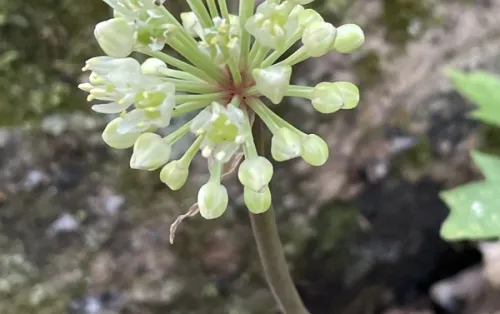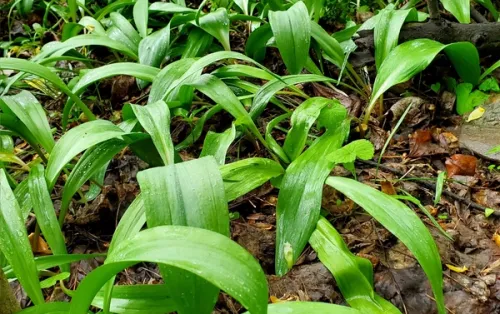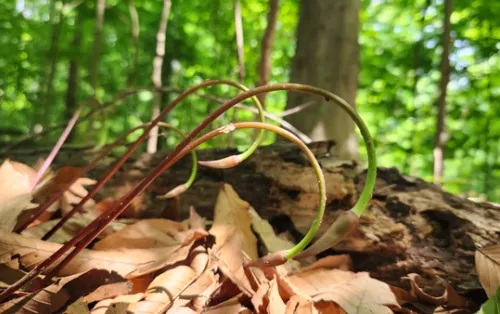Wild Leek
Wild Leeks, also called Ramps, are perennial woodland plants valued both for their ecological and culinary value. Wild Leek typically emerges in early spring, in cool, shaded areas typical of temperate deciduous forests, well before the forest canopy fully fills in. The leaves are broad and lush green, though they die back as the white, star-shaped flowers begin to bloom in early summer. The entire plant is edible, with a strong garlic-onion flavor that is milder than that of cultivated onions or garlic. Ramps have become increasingly popular in gourmet cooking, and they play a crucial role in their native ecosystems by providing early spring ground cover and pollinator support. They prefer rich, moist, well-drained soil and are often found across moist forest floors.
Details
Range Map
Ecological Benefits
Maintenance Tips
- Prefers moist soil conditions; water regularly if natural rainfall is not sufficient, especially in dry spring weather.
- Minimal to no pruning is needed. After flowering, the leaves will naturally die back.
- Thrives in well-drained, fertile, loamy soil rich in organic matter.
- Apply a light layer of organic mulch to mimic the leaf litter of its natural woodland habitat and to maintain soil moisture.
- Harvest responsibly if collecting wild ramps, as overharvesting can deplete native populations. Leave sufficient plants in place to ensure regeneration.







